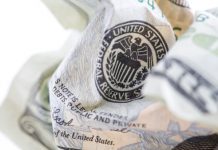Market movers today
- Today’s key event will be the ECB meeting: PEPP re-calibration and the inflation outlook will be the themes to focus on as hawks in the ECB’s Governing Council have recently become more vocal about pro-inflationary risks.
- In the US the weekly unemployment figures and more Fed speakers will be in focus.
- Riksbank Governor Ingves speaks about monetary policy and current challenges for the Swedish economy (09.00 CET).
- In Norway, mainland GDP growth picked up at the start of the summer as corona cases fell and restrictions were lifted. We expect this continued in July with mainland GDP growing 1.0% m/m.
The 60 second overview
ECB: Today’s highlight is the ECB meeting, where PEPP re-calibration and the inflation outlook will be the big focus themes, after hawks in the ECB’s Governing Council have recently become more vocal about pro-inflationary risks. In light of upward revisions in the growth and inflation outlook, we expect ECB to reduce the Q4 PEPP purchase pace back to the January/February level of EUR60bn/month, but from a market perspective ECB will attempt to keep this meeting as uneventful as possible in our view. If ECB do not indicate that the purchase pace will revert to the Jan/Feb level of around EUR60bn/m, this will de facto be an extension of PEPP beyond Mar22.
Fed: NY Fed President John Williams said yesterday that he does not think that the conditions for starting tapering have been met yet although the expectation still is that they will be met later this year. To us, this suggests that we should not expect the Fed to make any big announcement in connection with the upcoming meeting later this month, but will wait and see what the upcoming job reports will tell us about the current situation in the US labour market. As most still expect tapering to start this year, the big theme is not so much the timing of tapering but how fast tapering will be, which is the next major debate within the board. Kaplan is quoted for thinking Fed should start tapering in September. These comments are all the first we hear from Fed after the weak payrolls data last Friday and will be a key market input ahead of the blackout period this Saturday and FOMC meeting later in the month.
German election: With less than four weeks to go, the German election campaign is entering its hot phase and Germany is likely headed for its first three party coalition since the 1950s. Lately, the steady rise in popularity of the SPD party has gained markets’ attention, opening up the possibility of current Finance Minster Olaf Scholz taking over the chancellorship under either a centrist ‘traffic-light’ or leftish ‘Red-red-green’ coalition that could loosen the fiscal purse strings. See more in German Politics Monitor – The tables are turning left, 9. September.
Equities: Defensives mostly lead the market with utilities as the outstanding sector. Energy, materials and tech trailed. This summarized to S&P -0.1%, Dow -0.2%, Nasdaq -0.6% and Russell 2000 -1.1%. Asian markets are mostly lower as well, especially in Hong Kong as Tencent and Netease dropping on new regulation fear. US futures point to another muted session.
FI: On a daily change, the move in fixed income markets seemed rather limited yesterday with European rates 0.5bp lower on the day, however, some intra-day volatility was recorded. A gradual decline in yields from the start of the day amid a weakness in the equity markets was later replaced by a sell-off, leaving yields broadly unchanged on the day. Curves generally flattened. Focus are naturally still on the ECB meeting day and the FOMC comments and the upcoming taper discussion. Notably also, the inflation market continue to stay elevated, with the 2y2y and 5y5y inflation swaps within 8bp around 1.7%.
FX: JPY, NZD, and USD gained vis-à-vis CAD and Scandies yesterday on a relatively quiet day for FX markets. EUR/USD is slowly falling back again towards the 1.18 level. EUR/SEK rose to 10.20 and EUR/NOK continued to hover around 10.30 level.
Credit: Credit markets almost did not move yesterday where iTraxx Xover widened ½bp (to 229.4bp) and Main was unchanged at 45bp. HY bonds widened around ½bp and IG was unchanged.
Nordic macro
In Norway, mainland GDP growth picked up at the start of the summer as corona cases fell and restrictions were lifted. We expect this continued in July with mainland GDP growing 1.0% m/m. If proven right, this will be marginally lower than expected by Norges Bank in the June MPR (+1.3%). Keep in mind that May/June was stronger than expected, hence the activity level should be precisely as expected by NB in June.













